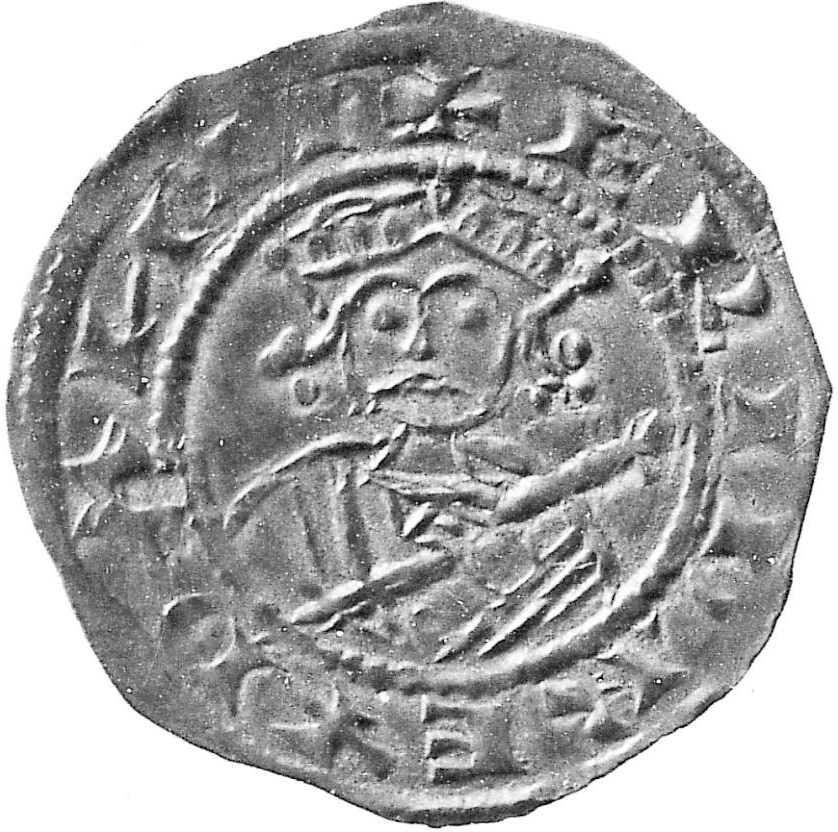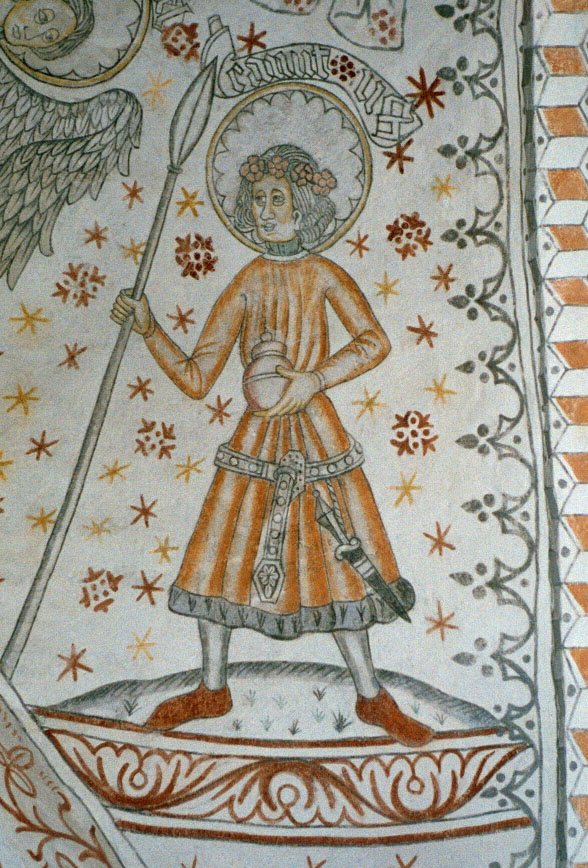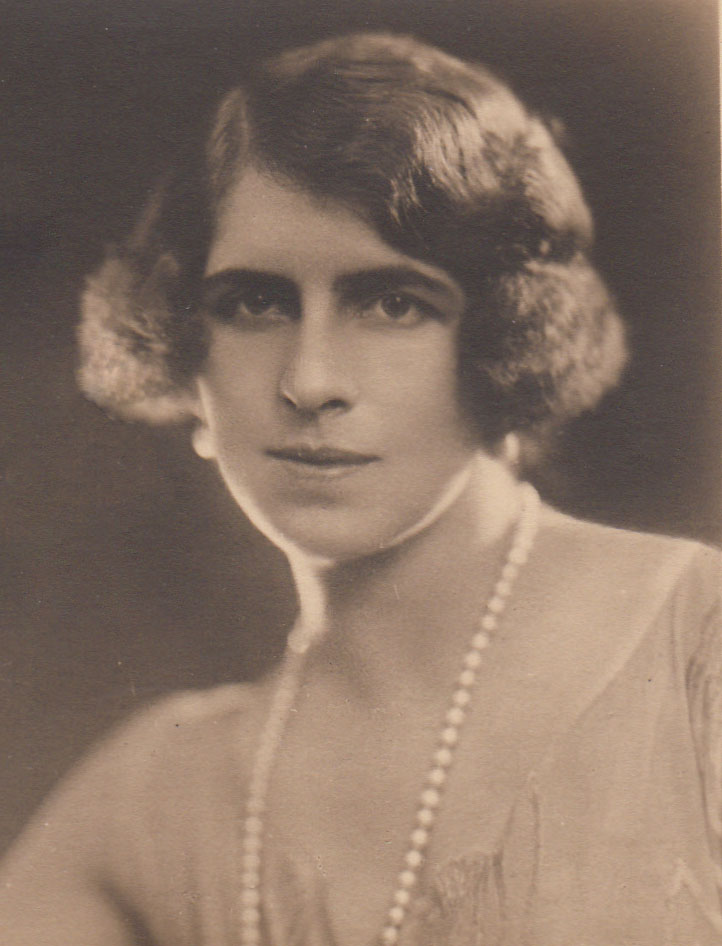© Unofficial Royalty 2025

King Carl XV of Sweden/King Karl IV of Norway; Credit – Wikipedia
May 3, 1152 – Death of Matilda of Boulogne, Queen of England, wife of King Stephen of England, at Hedingham Castle in Essex, England; buried at Faversham Abbey in Kent, England
When Stephen’s uncle King Henry I of England died, Stephen quickly crossed from Boulogne to England, seized power in England, and was crowned King of England. Empress Matilda, Henry I’s only surviving child, did not give up her claim to England and Normandy, leading to the long civil war known as The Anarchy between 1135 and 1153. During the civil war, Matilda of Boulogne was her husband’s strongest supporter. Matilda of Boulogne was as strong and resourceful as Stephen was weak and indecisive. Perhaps if she had not died in 1152 and her husband had not lost his strongest supporter, the result of the civil war would have turned out differently.
Unofficial Royalty: Matilda of Boulogne, Queen of England
May 3, 1257 – Death of Katherine of England, daughter of King Henry III of England at Windsor Castle; buried at Westminster Abbey in London, England
The description by 13th-century chronicler Matthew Paris that Katherine was “‘mute and useless though with a most beautiful face” has often been interpreted to mean that she had an intellectual disability or degenerative disease. However, it may indicate that Katherine had a stammer or some other speech impediment. There is much disagreement on what disease or disability Katherine may have had, or if she had one at all. Contemporary evidence suggests that the reaction of Katherine’s parents to her illnesses followed a similar reaction to the illnesses of her siblings and that Katherine was treated no differently than her siblings, suggesting that there were no serious or long-term health concerns. Katherine did have some illness during the spring of 1257, which resulted in her death on May 3, 1257, when she was three and a half years old. Her parents King Henry III and Queen Eleanor deeply mourned her death and were emotionally distraught.
Unofficial Royalty: Katherine of England
May 3, 1415 – Birth of Cecily Neville, Duchess of York, mother of King Edward IV and King Richard III of England, at Raby Castle in Durham, England
A great-granddaughter of King Edward III of England, Cecily Neville was the wife of Richard Plantagenet, 3rd Duke of York, also a great-grandchild of King Edward III, who was a claimant to the English throne and the leader of the Yorkist faction during the Wars of the Roses. She was also the mother of King Edward IV of England and King Richard III of England, the grandmother of the ill-fated King Edward V of England, and the great-grandmother of King Henry VIII of England. Cecily outlived all but two of her twelve children. She was alive when her granddaughter Elizabeth of York, daughter of King Edward IV, married Henry Tudor, who had defeated her son King Richard III at the Battle of Bosworth Field in 1485 and then succeeded to the English throne by right of conquest as King Henry VII, the first Tudor monarch. Cecily was alive when her granddaughter Elizabeth of York gave birth to her first three children, Cecily’s great-grandchildren Arthur, Prince of Wales, Margaret Tudor, and King Henry VIII. Through Margaret Tudor, who married James IV, King of Scots, Cecily is an ancestor of the British royal family and many other European royal families.
Unofficial Royalty: Cecily Neville, Duchess of York
May 3, 1446 – Birth of Margaret of York, Duchess of Burgundy, sister of King Edward IV and King Richard III of England, wife of Charles I, Duke of Burgundy, at Fotheringay Castle in Fotheringay, England
The daughter of Cecily Neville (above) and Richard Plantagenet, 3rd Duke of York, Margaret married Charles the Bold, Duke of Burgundy, after the death of his second wife Isabella of Bourbon. Margaret and Charles were half-second cousins. They were both great-grandchildren of John of Gaunt, Duke of Lancaster, the third surviving son of King Edward III, but from different wives of John. Margaret and Charles had no children, but Margaret was the stepmother to Charles’s daughter and successor Mary, Duchess of Burgundy. After Charles the Bold’s death, Margaret proved invaluable to Burgundy. Regarded as skillful and intelligent, Margaret provided guidance and advice to her stepdaughter Mary, using her own experiences in the court of her brother King Edward IV of England.
Unofficial Royalty: Margaret of York, Duchess of Burgundy
May 3, 1514 – Death of Anna of Brandenburg, Duchess of Schleswig and Holstein, first wife of King Frederik I of Denmark and Norway, in Kiel, Duchy of Schleswig and Holstein, now in the German state of Schleswig-Holstein; buried at the Convent Church in Bordesholm, Schleswig-Holstein, Germany
Anna died before her husband became King of Denmark and Norway, but she was the mother of his heir. She often accompanied her husband on his travels, and she was very popular with the people of the duchies of Schleswig and Holstein. Having two children during her teenage years weakened Anna’s health. She contracted tuberculosis and died, aged 26, while six months pregnant with her third child.
Unofficial Royalty: Anna of Brandenburg, Duchess of Schleswig and Holstein
May 3, 1764 – Birth of Madame Elisabeth of France, sister of King Louis XVI of France, at the Palace of Versailles in Versailles, France
Full name: Élisabeth Philippine Marie Hélène
Elisabeth was devoted to her brother King Louis XVI, and with his permission, declined all marriage offers so that she could remain in France. She accompanied her brother and his family to imprisonment in the notorious Temple. On May 9, 1794, Elisabeth was transferred to the Conciergerie, where she was tried and condemned to be executed the next day. She was executed by the guillotine at the Place de la Révolution in Paris (now called Place de la Concorde) with 23 other people. A very religious person, Elisabeth comforted and prayed with several others awaiting execution.
Unofficial Royalty: Madame Elisabeth of France
May 3, 1783 – Death of Prince Octavius, son of King George III of the United Kingdom, at Kew Palace in Surrey, England; buried at St. George’s Chapel, Windsor Castle
Smallpox was a leading cause of death in the 18th century. By having their children inoculated against smallpox, King George III and Queen Charlotte were trying to protect them and starting down the long road that would eventually eradicate this terrible disease. Before Edward Jenner developed the smallpox vaccine that contained the cowpox virus, variolation, first seen in China in the fifteenth century, was another way to protect against smallpox. Live smallpox virus in the liquid taken from a smallpox blister in a mild case of the disease was inoculated into a cut of a healthy person who developed a very mild case of smallpox. About 3% of those inoculated developed a severe case of smallpox and died, but that was preferable to catching smallpox with its mortality rate of 20–40% and scarred survivors. In April 1783, Octavius and his sister Sophia had their smallpox inoculations. Sophia recovered without incident, but four-year-old Octavius became ill and died several days later, on May 3, 1783.
Unofficial Royalty: Prince Octavius of Great Britain
Unofficial Royalty: Smallpox Knew No Class Boundaries
May 3, 1826 – Birth of King Carl XV of Sweden/King Karl IV of Norway at the Royal Palace in Stockholm, Sweden
Full name: Carl Ludwig Eugen
Upon his father’s death in 1859, Carl ascended to the thrones of Sweden as King Karl XV, and of Norway as King Karl IV. He was crowned in Sweden on May 3, 1860, and in Norway on August 5, 1860. Despite his abrupt manner, he is noted as one of the most successful Swedish sovereigns. During his reign, he oversaw the enactment of communal law, ecclesiastical law, and criminal law, and in 1858, passed the law of legal majority for unmarried women
Unofficial Royalty: King Carl XV of Sweden/King Karl IV of Norway
May 3, 1870 – Birth of Princess Helena Victoria of Schleswig-Holstein, granddaughter of Queen Victoria of the United Kingdom, at Frogmore House in Windsor, England
Full name: Victoria Louise Sophia Augusta Amelia Helena
Helena Victoria, known as Thora, was the daughter of Princess Helena and Prince Christian of Schleswig-Holstein. Thora never married and remained at home. Following her mother’s example, Thora was involved in many charities and organizations. These included the YMCA, YWCA, and Princess Christian’s Nursing Home in Windsor (established by her mother). She was also, with her sister Marie Louise, an avid supporter of the arts, and often held small concerts and performances at their various homes. Like her mother, Thora also assisted her aunt Beatrice in serving as an unofficial secretary to Queen Victoria. In the last few months of the Queen’s life, she often dictated her journal to Helena Victoria.
Unofficial Royalty: Princess Helena Victoria of Schleswig-Holstein
May 3, 1905 – Birth of Albrecht, Duke of Bavaria, Head of the House of Wittelsbach and pretender to the former Bavarian throne from 1955 until his death in 1996, in Munich, Kingdom of Bavaria, now in the German state of Bavaria
Albrecht, Duke of Bavaria was Head of the House of Wittelsbach and pretender to the former Bavarian throne from 1955 until he died in 1996. He was the eldest surviving grandson of the last reigning King of Bavaria, Ludwig III, and also the heir to the Jacobite succession.
Unofficial Royalty: Albrecht, Duke of Bavaria
Unofficial Royalty: The Jacobite Succession – Pretenders to the British Throne
May 3, 1918 – Death of Princess Marie Anna of Saxe-Altenburg, wife of Georg, Prince of Schaumburg-Lippe, in Bückeburg, Principality of Schaumberg-Lippe, now in the German state of Lower Saxony; buried at the Bückeburg Mausoleum in the park surrounding Bückeburg Castle
In 1882, Maria Anna married the future Georg, Prince of Schaumburg-Lippe and the couple had nine children. Upon the death of his father in 1893, Maria Anna’s husband Georg became the reigning Prince of Schaumburg-Lippe. As Princess of Schaumburg-Lippe, Maria Anna supported churches and schools. Maria Anna’s husband died in 1911, and Marie Anna survived her husband by seven years, dying on May 3, 1918, at age 54.
Unofficial Royalty: Marie Anna of Saxe-Altenburg, Princess of Schaumberg-Lippe
May 3, 1974 – Birth of Princess Haya bint Hussein, daughter of King Hussein of Jordan and his third wife Queen Alia al-Hussein, in Amman, Jordan
A skilled equestrian, Princess Haya was the first female to represent Jordan internationally in show jumping. She won individual bronze at the 1992 Pan Arab Games, becoming the first female to ever win a Pan-Arab medal in equestrian sports. She was named Equestrian Personality of the Year in 1996, by the Spanish Equestrian Federation. In 2000, she competed in the Sydney Olympic Games and was the flag-bearer for the Jordanian athletes. In 2004, Haya became the junior wife of Sheikh Mohammed bin Rashid Al Maktoum, Emir of Dubai, Vice President and Prime Minister of the United Arab Emirates. The couple had two children. Sheikh Mohammed divorced Princess Haya under Sharia Law in February 2019, but did not inform Haya. In the early summer of 2019, Princess Haya took her two children and fled to London, where she sought political asylum. In 2021, Princess Haya was granted full custody of her children by a British court. In March 2022, the British High Court declared that Princess Haya had been a victim of “domestic abuse”, and she was announced as the sole person in charge of the children’s schooling and medical care.
Unofficial Royalty: Princess Haya bint Hussein
May 3, 1986 – Birth of Jack Brooksbank, husband of Princess Eugenie of York, born at St. Thomas’ Hospital in London, Lambeth, England
Full name: Jack Christopher Stamp
Jack and Eugenie are third cousins twice removed via their mutual descent from Thomas Coke, 2nd Earl of Leicester. They were married on October 12, 2018, at St. George’s Chapel, Windsor. The couple has two sons.
Unofficial Royalty: Jack Brooksbank
This article is the intellectual property of Unofficial Royalty and is NOT TO BE COPIED, EDITED, OR POSTED IN ANY FORM ON ANOTHER WEBSITE under any circumstances. It is permissible to use a link that directs to Unofficial Royalty.









